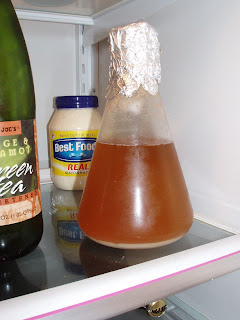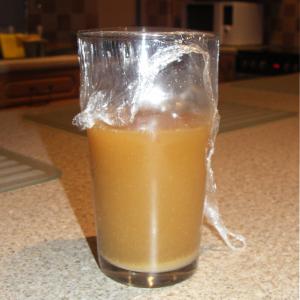This is my third batch of beer, and the first using liquid yeast. I'm trying to brew a hefeweizen, and I was pretty happy to see that the LHBS had some Wyeast 3068 considering their liquid yeast selection is pretty thin. However, it was just a couple days past the 6 month mark. Decided to take a chance on it anyway, and made a half-gallon starter in a one gallon jug. After 6 hours, the smack pack still hadn't expanded any, first sign that things aren't well. Went ahead and opened it and pitched it into starter. Shaking it to aerate created a fair amount of foam. After 12 hours, the yeast had settled to the bottom and was a milk-chocolate color, and no air-lock activity. The foamy head had mostly died down by this point too, instead of maintaining/getting larger as I would have expected. Now it has been almost 48 hours, still no signs of life.
I really want to use a yeast strain that will give me some significant ester flavors, without having to wait for an online order of liquid yeast to arrive. I was thinking maybe I could harvest the yeast from a six-pack of something, although I'm aware that many hefeweizens have different bottle strains than the primary fermentation. My questions are: 1) which brands can I harvest yeast from, and can anyone point me in the direction of a good tutorial on the process? and 2) Since my resources are limited, I was wondering if I could reuse this starter by just pitching the sediment right into the jug and giving it a good shake. Since the yeast in there are dead, it should still be full of unused nutrient from the smack pack, plus I'd have to go buy more malt extract to finish the batch if I use what I have to make a fresh starter. I was careful about sanitization, but I also know it'd be a great breeding ground for anything that might have slipped through.
I really want to use a yeast strain that will give me some significant ester flavors, without having to wait for an online order of liquid yeast to arrive. I was thinking maybe I could harvest the yeast from a six-pack of something, although I'm aware that many hefeweizens have different bottle strains than the primary fermentation. My questions are: 1) which brands can I harvest yeast from, and can anyone point me in the direction of a good tutorial on the process? and 2) Since my resources are limited, I was wondering if I could reuse this starter by just pitching the sediment right into the jug and giving it a good shake. Since the yeast in there are dead, it should still be full of unused nutrient from the smack pack, plus I'd have to go buy more malt extract to finish the batch if I use what I have to make a fresh starter. I was careful about sanitization, but I also know it'd be a great breeding ground for anything that might have slipped through.




